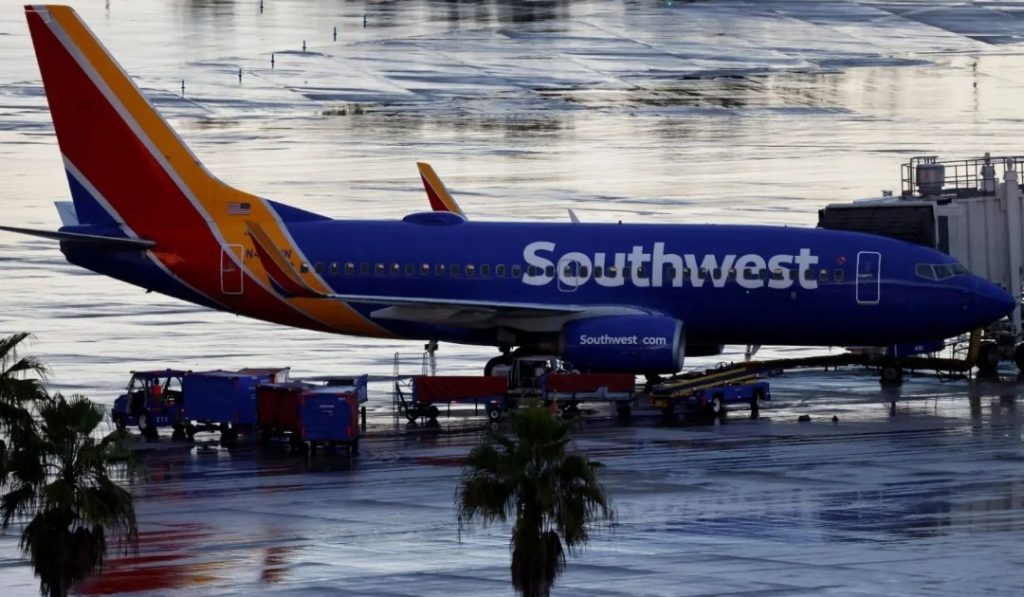Southwest Airlines’ newly announced policy regarding the in-flight use of portable chargers signifies a heightened focus on passenger safety and a proactive approach to mitigating the potential risks associated with lithium-ion batteries. The policy, effective May 28, 2025, prohibits passengers from charging their devices using power banks stored inside carry-on luggage, overhead bins, or any other concealed location. Instead, passengers will be required to keep their portable chargers visible at all times during charging. This measure aims to empower flight crews to quickly identify and address any potential battery malfunction, such as overheating, smoke emission, or fire, thus preventing a potentially hazardous situation from escalating. The airline emphasizes that the safety of its customers and employees is paramount, and this policy change reflects its commitment to maintaining the highest safety standards.
The impetus for Southwest’s decision stems from a concerning trend of battery-related incidents reported across the aviation industry. The Federal Aviation Administration (FAA) has documented a significant number of such incidents in recent years, with at least 22 cases reported in 2025 alone, involving batteries catching fire, overheating, or emitting smoke onboard aircraft. This figure, while lower than the 89 incidents recorded in 2024, still underscores the potential hazards posed by lithium-ion batteries, especially within the confines of an aircraft cabin. One notable incident in March 2025, currently under investigation by the FAA, involved a battery fire reported by flight attendants on a Southwest flight shortly after landing at Reno-Tahoe International Airport. Such incidents highlight the need for enhanced safety protocols and proactive measures to prevent similar occurrences in the future.
Southwest’s policy aligns with existing FAA regulations regarding lithium-ion batteries on aircraft. The FAA currently permits passengers to carry lithium batteries only in their hand luggage, prohibiting them from being placed in checked baggage or aircraft cargo holds. This restriction, implemented in response to the potential fire hazard posed by these batteries in less accessible areas of the aircraft, is further reinforced by the International Civil Aviation Organization (ICAO), a United Nations agency responsible for setting global aviation standards. Since 2016, the ICAO has prohibited the carriage of lithium-ion batteries in checked baggage and cargo holds, emphasizing the importance of keeping these potential fire hazards within the controlled environment of the passenger cabin.
The rationale behind Southwest’s new policy and existing FAA regulations is rooted in the inherent characteristics of lithium-ion batteries. These batteries, while highly efficient and widely used in portable electronic devices, pose a fire risk due to their chemical composition and susceptibility to thermal runaway. Thermal runaway is a phenomenon where a battery cell overheats, leading to a chain reaction that can cause the battery to ignite or explode. Several factors can contribute to thermal runaway, including manufacturing defects, physical damage to the battery, overcharging, or exposure to extreme temperatures. The enclosed environment of an aircraft cabin, coupled with the limited access to firefighting equipment during flight, necessitates stringent measures to prevent and manage potential battery fires.
By requiring passengers to keep portable chargers visible during use, Southwest aims to facilitate early detection of any signs of battery malfunction. Flight attendants, trained to recognize these signs, can then take prompt action to mitigate the risk, such as isolating the overheating battery, using fire containment bags, or deploying other appropriate safety measures. The visibility of the charger allows for immediate assessment and intervention, preventing a potential fire from escalating and ensuring the safety of all passengers and crew. This proactive approach, combined with existing regulations regarding the carriage of lithium-ion batteries, contributes to a multi-layered safety strategy aimed at minimizing the risk associated with these potentially hazardous devices.
In conclusion, Southwest Airlines’ ban on charging devices using portable chargers stored in carry-on luggage represents a significant step towards enhanced passenger safety in the air. The policy, based on industry-wide concerns and regulatory guidance, directly addresses the potential fire hazards associated with lithium-ion batteries. By mandating the visibility of portable chargers during use, Southwest empowers its flight crews to proactively identify and manage potential battery malfunctions, minimizing the risk of in-flight fires and ensuring a safer travel experience for all. This policy, along with existing FAA and ICAO regulations, underscores the aviation industry’s commitment to prioritizing passenger safety and adapting to the evolving challenges posed by the increasing use of lithium-ion batteries in portable electronic devices.














